Inventory management is a crucial aspect of supply chain management, and effective strategies can help businesses reduce costs, improve customer service, and increase profits.

But what does a great inventory management strategy look like?
The answer depends, of course, on your company’s objectives and, particularly, on your customer service promises. In other words, it will be different for every enterprise or organisation.
So, rather than get overly prescriptive, I’ll use this blog post to highlight some companies that have achieved success through excellence in inventory management, and outline some of the most effective elements of their strategies.
Amazon – Chaos Managed by Technology
I’m sure that Amazon needs no introduction regarding its business nature, so let’s jump right into a summary of why it’s a company that has garnered a reputation for inventory management excellence.
One factor that stands out to me as a highlight of their IM strategy is their seemingly chaotic approach to warehouse layout. If you were to walk along the racks of an Amazon warehouse, you would not see sections set aside for specific types of products, or indeed, any sign that products are organised into categories, and that’s because they are not.
Instead, after deliveries arrive at the receiving dock, staff break the contents down for put-away. At that point, each SKU will be taken to any convenient storage location in the warehouse.
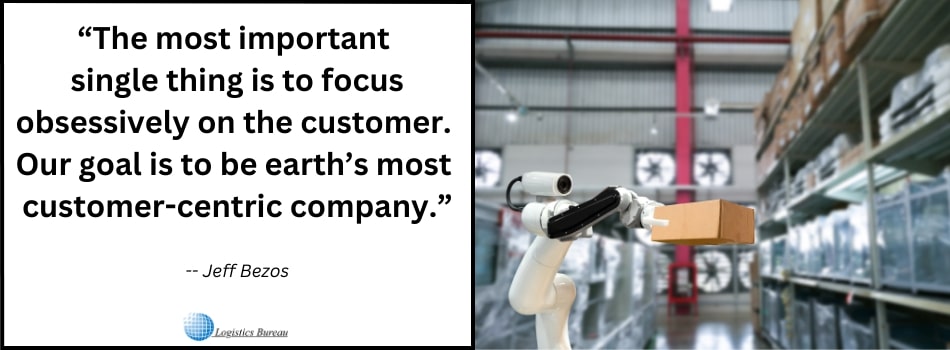
It’s a random approach in which, for example, a consignment of electric blenders might find a home in a storage location between bottles of shampoo on one side, and dog collars on the other.
But the randomness extends even further, because the consignment of electric blenders might be put away in not one, but several storage locations, defined only by the availability of empty spaces in which to place the individual units.
Does this mean it’s possible to come across the same model of electric blender in various locations as you walk through the warehouse? The answer is yes, and there is a reason why this random put-away methodology works for Amazon.
Orders Out of Chaos
When Amazon warehouse operatives place items into a storage location, they scan the barcode on each item to be put away and then scan another barcode on the storage location itself. This process ensures that Amazon’s warehouse management system records the location of every item in the facility.
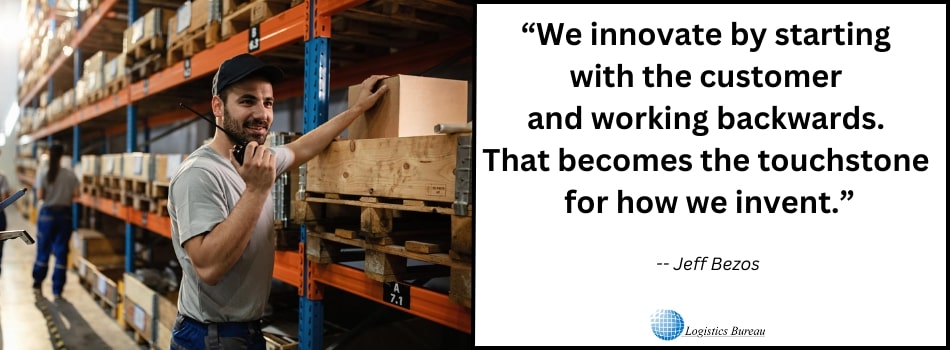
When it comes to picking, an operative needing to pick one of those electric blenders for an order will receive directions to the closest storage location to which the item has been assigned.
The operative need not travel to a “small appliances” section in the warehouse (which might be a hundred metres or more from his or her current location) and traverse that section to locate the blenders.
In effect, the “chaos approach means picking operatives are always within easy reach of items required for customer orders. It’s a strategy that keeps travel time in the warehouse to a minimum, both in the put-away and picking processes.
What’s Good for Customers is Good for Amazon
Another advantage of Amazon’s random slotting approach is that it maximises warehouse capacity utilisation. That’s because there is no requirement to have empty or near-empty bins tied up while waiting for the next delivery of the assigned products.
Instead, empty bins are continually filled, enabling Amazon’s warehouses, while gigantic enough, to be smaller than a more conventional layout would permit.
This “random” system underscores one of the key reasons for Amazon’s success in inventory management—its commitment to understanding its customers and their needs.
While another ecommerce company might choose to arrange its warehouses more conventionally, Amazon has learned to exploit the needs of consumers to drive its internal efficiencies along with its service promises.
The picking system works because Amazon sells directly to consumers, so it rarely ships pallets or even sealed cases of any SKU. Therefore, it is perfectly feasible to split cases down at put-away and locate the contents in multiple locations around the warehouse. For a B2B company supplying retail stores, on the other hand, this approach would be far less effective.
Amazon did not invent the random storage approach. However, it embraced it to an unprecedented depth and scale, developing in-house digital solutions to support and manage the strategy. The company has recently increased the system’s efficiency by integrating its Kiva robots into the mix.
IM Lessons from Amazon
So, if there is an IM lesson to learn from Amazon, it’s probably this. When evaluating your customers’ needs, thinking about how to design your company’s service to meet them is natural. But consider, too, how you can turn those needs to your advantage in inventory management.
Another takeaway is the importance of warehouse layout as an enabler for inventory management excellence.
As you can deduce from Amazon’s example, there is no standard for an optimal warehouse layout. It depends on your customers’ needs, the unique nature of your business operation, and a range of other factors.
However, determining what’s optimal is not necessarily easy, which is why so many enterprises and organisations have engaged my team at Logistics Bureau to assist with the task.
If you’d like to improve inventory management through warehouse layout optimisation, we’d be pleased to discuss your operation and explain how we could help. Why not start with a free online call with one of our IM specialists?
Toyota – Just in Time for IM Excellence
The case of Toyota is interesting because it highlights how any inventory management strategy, no matter how successful, can be vulnerable to changes in the business environment. Toyota’s inventory management strength proved, during the COVID-19 crisis, also to be its Achilles’ heel.
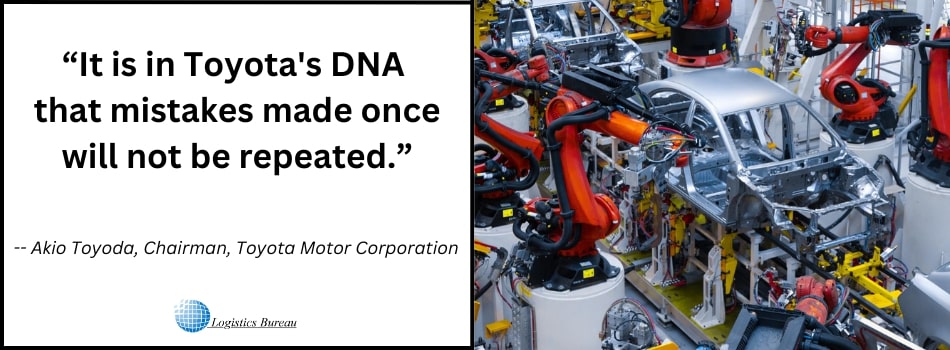
Retired boxer Mike Tyson said, “Everyone has a plan until they get punched in the face.” The COVID pandemic was the metaphoric punch that ended Toyota’s long run of success with a just-in-time (JIT) IM strategy.
For all that, though, Toyota belongs in any article about inventory management excellence since, for many years, the company was seen as an example to be followed for any company concerned about inventory and the money it ties up.
Toyota was one of the pioneers of JIT inventory management, implementing it initially in the 1970s primarily as a means to minimise stockholdings of raw materials to reduce waste and cost. Over the course of around 15 years, the company perfected the strategy. It was exalted worldwide and became a model for enterprises aspiring to achieve lean supply chains.
Just in Time IM: Successful, But Not Without Risk
The principle of JIT inventory management is straightforward. In the case of Toyota, it meant keeping the bare minimum of inventory and only ordering parts and raw materials upon receipt of a customer’s order—and then only in the precise quantities required to fulfil that order.
The results were astounding, allowing Toyota to dramatically reduce inventory levels and adapt rapidly to changes in market conditions.
JIT enabled the company to produce a wide range of diverse car models, without ever needing to maintain extensive inventories of materials, parts, or even finished cars. Naturally, Toyota’s warehousing demand and the associated cost saw substantial reductions after the company eliminated the need to store large quantities of stock.

As a prerequisite for this ambitious strategy to work, it was essential for Toyota to form and maintain partnerships with parts suppliers that could respond quickly to orders and provide expedited delivery.
The strategy was always risky, yet despite several notable supply chain disruptions, including a fire at a plant belonging to one of its suppliers, and the Japanese Tsunami in 2011, Toyota never suffered any significant inventory shortages. However, considering those events, the company did adjust its procurement strategy, increasing engagement with alternative sources of supply.
What Next for Toyota IM?
Toyota’s JIT model became the gold standard for lean inventory management around the world and remained so for at least 25 years. Unfortunately, the COVID-19 pandemic proved to be the perfect storm that revealed the one serious vulnerability of JIT, the risk of isolation from several sources of supply all at the same time.
While Toyota initially weathered that storm, it could only do so for a while, and by late 2021, the company was forced to cut production drastically.
Like many companies, Toyota learned a painful lesson from the pandemic, and is now working to introduce more resilience into its supply chain. That will inevitably mean changes to the way it manages inventory.
However, given the company’s reputation for innovation, it bears monitoring as it goes through the transition, because it might just come up with a new strategy to succeed JIT as a global model for IM excellence.
But rather than wait for Toyota to take the lead, you should retool your enterprise sooner rather than later, if necessary, for inventory management resilience in light of recent lessons learned.
We’ve worked with many new clients, and some long-standing ones, too, on IM improvement projects in the wake of COVID-19, and we’ll be delighted to assist you in shifting to a strategy for managing inventory with resilience in mind.
Zara – Resilient Lean Inventory Management
Like Toyota, fashion retailer Zara applies a lean methodology in the operation of its supply chain, including the way it manages inventory.
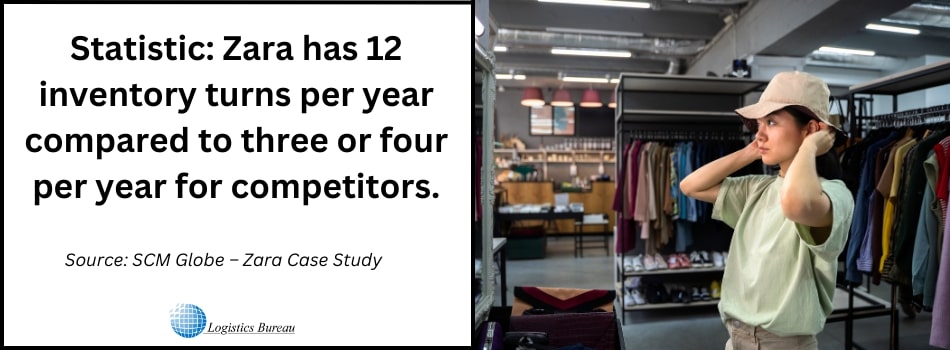
Unlike Toyota, Zara faired very well in weathering the COVID-19 pandemic. We can deduce from this fact that it is still possible to be successful with lean IM, even during an intensely disruptive period for supply chains like the one endured during the pandemic.
When we talk about inventory management, it’s vital to remember that as a discipline, it encompasses every aspect of the supply chain, from procurement all the way through to delivery of finished products. That’s a principle that Zara applies rigorously, to which we can attribute much of the company’s success.
A Company in Control
As mentioned, Zara is committed to a lean formula, which has served the company well, and more than many other enterprises, it relies on superlative inventory management to maintain its place as a leader in fashion retail.
Vertical integration is a crucial element of Zara’s supply chain strategy, and keeping its supply chain short also helps a lot. From production facilities to retail outlets, most of Zara’s supply chain is operated in-house, as opposed to the heavily outsourced models of many of its competitors.
It may have been this high degree of supply chain control that allowed Zara to thrive during the pandemic after posting its only quarterly loss (and the only loss ever) at the beginning of 2020. The company recovered quickly without majorly changing its inventory management strategy.
They Don’t Call It Fast Fashion for Nothing
With sourcing, sewing, and other production-related facilities located close to its Spanish headquarters, Zara’s production costs are undoubtedly higher than those of some of its competitors, many of which manufacture in low-cost Asian countries. Still, its logistics costs are lower than theirs, and local production means ultra-fast turnaround times.
Such speed is essential given that Zara competes on its ability to start retailing adaptations of couture designs within a couple of weeks from when they are first seen on fashion show catwalks.
The short supply chain also enables the company to produce new designs in small batches, which imbues its products with exclusivity and scarcity, making people want to buy them before they run out.
Predictable Delivery Processes
In a way, Zara is taking the usually undesirable trait of understocking and turning it into a competitive advantage. It works, too, because less than 10% of Zara’s inventory comprises unsold stock, around half that of the industry average. Certainly, overstocking is not a problem from which this company suffers.
Indeed, excess inventory of any type is a rare phenomenon for Zara, where adherence to lean IM is supported by inventory optimisation modelling and a rigid, but fast, schedule of deliveries to its stores.
Every retail outlet places orders twice per week, on specified days. The orders are dispatched at specific times—and arrive at specific times—with items already priced and labelled, ready for immediate in-store display, and only in the precise quantities that the stores need. The system successfully keeps waste in finished goods to a minimum and ensures price discounts are unnecessary to support sales volume.
Forecasts are for Fabric
Zara is also innovative in its approach to the other end of the supply chain. Because it knows its customers want to buy and be seen in the latest designs, and that they are not the type of people to be seen too often in the same garment, the company does not go overboard on fabric quality, happily buying material that is in abundant supply at reasonable prices.

Zara’s forecasting strategy focuses on demand for fabric rather than finished goods—because, for a company that buys undyed fabric and takes care of all the colouring in-house, the cost of getting forecasts wrong is minimal.
It’s easy to procure extra fabric in the case of low forecasts, and over-ordering does not result in waste, since there is always a ready demand for uncoloured fabric in the production department.
So, to summarise, Zara manages its inventory at every stage in the supply chain, using vertical integration to its advantage, and employing a range of functional and cross-functional initiatives, from procurement practices that simplify IM, through careful control of production volumes, to creating a market in which customers are always eager to buy—and not to mention slick distribution and logistics processes.
Other Companies that Lead the Way in IM Excellence
When you’re seeking inspiration for inventory management improvement, it always helps to study companies renowned for their mastery of this critical supply chain management discipline.
Amazon, Toyota, and Zara are prime examples, but other enterprises are also notable for their IM prowess, making them worthy of scrutiny. They include:
- Walmart – known for making innovative use of cross-docking to aid efficient inventory management.
- Proctor & Gamble – uses collaborative planning, forecasting and replenishment (CPFR) for effective inventory planning and to minimise stockouts.
- Cisco – employs a demand-driven supply chain model to ensure inventory levels align closely with what the market requires, thus keeping excess inventory to a minimum.
- Apple – known for its meticulous product lifecycle to reduce the risk of obsolete inventory and maintain a healthy product mix.
- Coca-Cola – successfully introduced vendor-managed inventory (VMI) to drive high efficiency throughout the supply chain.
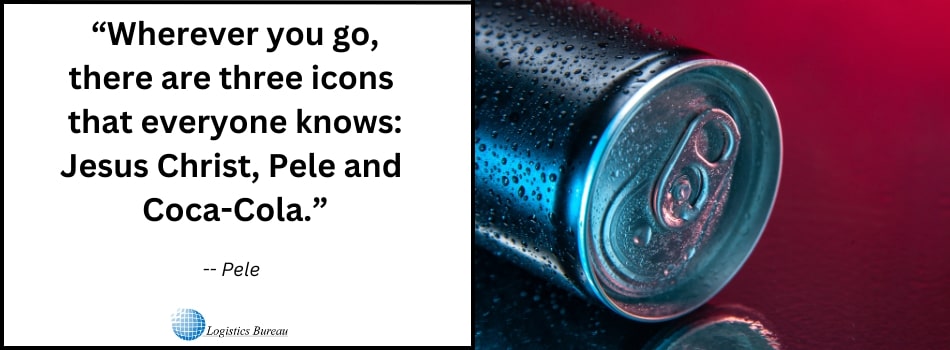
- Dell – keeps finished goods inventory to a minimum through a build-to-order manufacturing strategy.
- H&M – optimises stock levels in different locations based on local demand patterns using data-driven inventory allocation, ensuring that products are available where and when customers are most likely to purchase them.
Could Your Company Be the Next Great Example of IM Excellence?
The companies mentioned in this article have all demonstrated how inventory management excellence is vital in maintaining a competitive advantage in their respective markets. Businesses like yours can draw inspiration from them in any drive to enhance IM performance.
It might be possible to emulate some aspects of their strategies, but as I mentioned at the beginning of this article, every business is different, and your inventory management success will depend on a carefully tailored strategy that robustly supports your supply chain and customer service offer.
At Logistics Bureau, we’ve helped many reputable and well-known companies to reduce costs, improve service, and become more profitable by developing and implementing effective IM strategies. I’m sure we can do the same for your organisation.
If inventory management excellence is an aspiration that you and your management team would like to realise, let’s talk and see how our consulting team can best support you.
- SEO Powered Content & PR Distribution. Get Amplified Today.
- PlatoData.Network Vertical Generative Ai. Empower Yourself. Access Here.
- PlatoAiStream. Web3 Intelligence. Knowledge Amplified. Access Here.
- PlatoESG. Carbon, CleanTech, Energy, Environment, Solar, Waste Management. Access Here.
- PlatoHealth. Biotech and Clinical Trials Intelligence. Access Here.
- Source: https://www.logisticsbureau.com/inventory-management-excellence-some-companies-to-learn-from/



